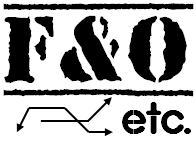Continunig further from our part I of this article, Black–Scholes Model Explained with Example for Options Pricing, we discussed the following three points:
1. the probability that Microsoft stock will actually move higher than $25
2. the probability that if it moves higher, how high will it go?
3. the time value of money for the one year timeframe (time to option expiry)
Let's see the second part here, for the third point of time value of money.
Black–Scholes Model Explained with Example for Options Pricing
Black–Scholes Model which was developed by Fischer Black, Myron Scholes and Robert Merton in the early 1970’s is widely used in pricing Options. However, how many of the actual options traders really understand the Black–Scholes Model is a big question.
In this article, we'll cover layman's approach to understanding the logic and reasoning behind the Black–Scholes Options Model. We also cover the underlying assumptions for Black–Scholes Model and see how the same model can be extended to price different financial assets.
In this article, we'll cover layman's approach to understanding the logic and reasoning behind the Black–Scholes Options Model. We also cover the underlying assumptions for Black–Scholes Model and see how the same model can be extended to price different financial assets.
Options Vertical Spread: What is Vertical Spread in Options Trading?
Details about Vertical Spreads in Options trading. Vertical Spreads explained with Example
What is a Vertical Spread in Options Trading?
When an options trader takes multiple option positions where options are of different strike prices but of the same expiry date, then the net position created for such combination of options is termed as "Vertical Spread".
What is a Vertical Spread in Options Trading?
When an options trader takes multiple option positions where options are of different strike prices but of the same expiry date, then the net position created for such combination of options is termed as "Vertical Spread".
Options Horizontal Spread: What is Horizontal Spread in Options Trading?
Details about Horizontal Spreads in Options trading. Horizontal Spreads explained with Example
What is a Horizontal Spread in Options Trading?
When an Options trader takes multiple positions in various options so as to make a spread, but the options taken are such that they have different expiry dates, then the option spread formed is known as "Horizontal Spread".
What is a Horizontal Spread in Options Trading?
When an Options trader takes multiple positions in various options so as to make a spread, but the options taken are such that they have different expiry dates, then the option spread formed is known as "Horizontal Spread".
Natural Gas ETFs List: Trade Natural Gas through Exchange Traded Funds
List of Natural Gas ETF or Natural Gas Exchange Traded Funds available for trading on NASDAQ and other exchanges.
We've seen in our earlier articles that Natural Gas can be traded as a commodity through Natural Gas Futures Trading or by investing in Natural Gas specific stock. However, there are other ways to trade natural gas if neither commodity futures trading nor sotck trading suits you. There are natural gas specific funds and ETF's (Exchange Traded Funds) which offer you the benefit of diversification instead of taking the stock specific risks.
In this article, we will talk about the commonly traded Natural Gas Exchange Traded Funds
We've seen in our earlier articles that Natural Gas can be traded as a commodity through Natural Gas Futures Trading or by investing in Natural Gas specific stock. However, there are other ways to trade natural gas if neither commodity futures trading nor sotck trading suits you. There are natural gas specific funds and ETF's (Exchange Traded Funds) which offer you the benefit of diversification instead of taking the stock specific risks.
In this article, we will talk about the commonly traded Natural Gas Exchange Traded Funds
Top 10 Natural Gas Stocks Shares Companies List
Details and List of top ten Natural Gas companies which are in business of Natural Gas
Continuing our series on Natural Gas trading from our preiouos article, Natural Gas Companies & Stocks for Trading & Investments, here is the list of top 10 nat gas companies in USA:
1. Exxon Mobil
Reproted to have an average Daily Natural Gas Production of around 4 billion cubic feet.
As of 2010, the Reserves were reported to be at 79 trillion cubic feet of natural gas (26.1 trillion in the U.S.).
Continuing our series on Natural Gas trading from our preiouos article, Natural Gas Companies & Stocks for Trading & Investments, here is the list of top 10 nat gas companies in USA:
1. Exxon Mobil

Reproted to have an average Daily Natural Gas Production of around 4 billion cubic feet.
As of 2010, the Reserves were reported to be at 79 trillion cubic feet of natural gas (26.1 trillion in the U.S.).
Natural Gas Company Stocks for Trading & Investments
Details and List of Natural Gas Companies which are in the business of Natural Gas Production, Marketing, Distribution and Use.
Copyright Information:
© FuturesOptionsETC.com
Please see Our Copy Right Policy. All the articles, posts and other materials on this website/blog are copyrighted to the authors & publishers of this site. The content should NOT to be reproduced on any other website or through other medium, without the author's permission. Contact: contactus(AT)futuresoptionsetc.com
DISCLAIMER: Before using this site, you agree to the Disclaimer. For Any questions or comments, please mail contactus(AT)futuresoptionsetc.com.
| About Us | Advertise With Us | Copyright Policy & Fair Use Guide | Privacy Policy | Disclaimer |
